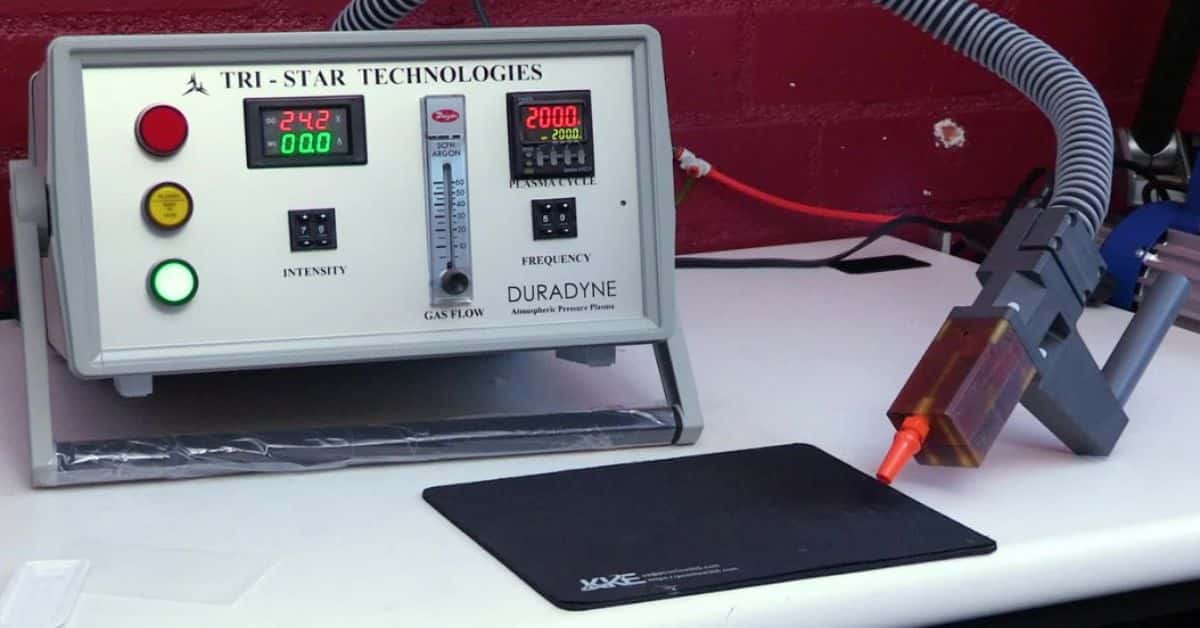The Uses of Plasma Cleaning in 3D Printing

3D printing is a revolutionary innovation in the realm of manufacturing, prototyping, and creativity. While 3D printing offers many advantages for quick and easy prototypes and parts, it still presents challenges.
Plasma cleaning has become a key tool in advanced manufacturing, playing a crucial role in surface preparation for 3D-printed parts. Our guide below will explain in-depth plasma surface cleaning and its many uses in 3D printing.
Plasma Surface Cleaning: A Review
Before we can understand how plasma surface cleaning helps 3D printing, we must know the basics of plasma cleaning. Keep reading to learn what plasma surface cleaning is, its advantages, and its applications.
What is Plasma Surface Cleaning?
Plasma surface cleaning uses ionized gas (plasma) to alter the surface of a material. The plasma systems apply energy to a gas like air, oxygen, or argon to create a mixture of charged particles to create this ionized gas. When these particles interact with the surface of a material, they can clean contaminants, break down molecular bonds, and enhance wettability—all without altering the bulk properties of the material.
Benefits of Plasma Cleaning
Plasma cleaning offers numerous advantages in modern manufacturing. It provides non-damaging cleaning by targeting contaminants at a microscopic level without harming the underlying material.
This eliminates the need for harsh chemicals, making it safer and more sustainable. Plasma surface activation also improves adhesion by preparing surfaces for adhesives, coatings, and bonding materials.
Applications of Plasma Cleaning
Plasma cleaning is widely versatile and utilized across numerous industries for its precision and effectiveness.
- Electronics Industry
- Medical Field
- Automotive Sector
- Optics
- Aerospace
Overall, plasma cleaning’s adaptability and efficiency make it an invaluable tool in modern manufacturing and research.
How Plasma Cleaning is Used in 3D Printing
Now that we better understand plasma cleaning, we can better analyze its uses in 3D printing. From preparing the surface before printing to improving adhesion for multi-layer printing projects, there are many applications for a plasma surface treatment system in 3D printing.
Surface Preparation Before Printing
One critical phase where plasma cleaning proves invaluable is pre-printing surface preparation. 3D printing can require intricate builds requiring precise adhesion, whether constructing prototypes or functional components. Plasma cleaning ensures that the printing surface is free from oils, dust, and oxides, eliminating factors that could compromise print accuracy or adhesion.
Post-Printing Surface Enhancement
Beyond cleaning, plasma can activate surfaces post-printing. For instance, it can generate micro-scale surface hills and valleys to improve the mechanical bonding of paints or secondary materials. This is especially beneficial in applications like automotive or aerospace, where post-printing treatments like painting, coating, or sealing are integrated into the workflow.
Improving Adhesion for Multi-Layer Printing
Multi-material or multi-layer 3D printing is increasingly popular for its ability to create complex, high-performance parts. Plasma optimizes surface bonding for these technologies and ensures layers adhere effectively without compromising structural integrity.
Optimizing Small and Complex Parts
Many 3D-printed parts are inherently small or intricate. Plasma cleaning’s ability to treat surfaces without physical contact makes it perfect for cleaning hard-to-reach corners, ensuring consistency throughout the component.
Transform 3D Printing with Tri-Star Technologies’ Plasma Cleaning
If you’d like to integrate plasma cleaning into your 3D printing projects, Tri-Star Technologies is here to help. View our plasma surface systems online or contact our staff to learn more today.


